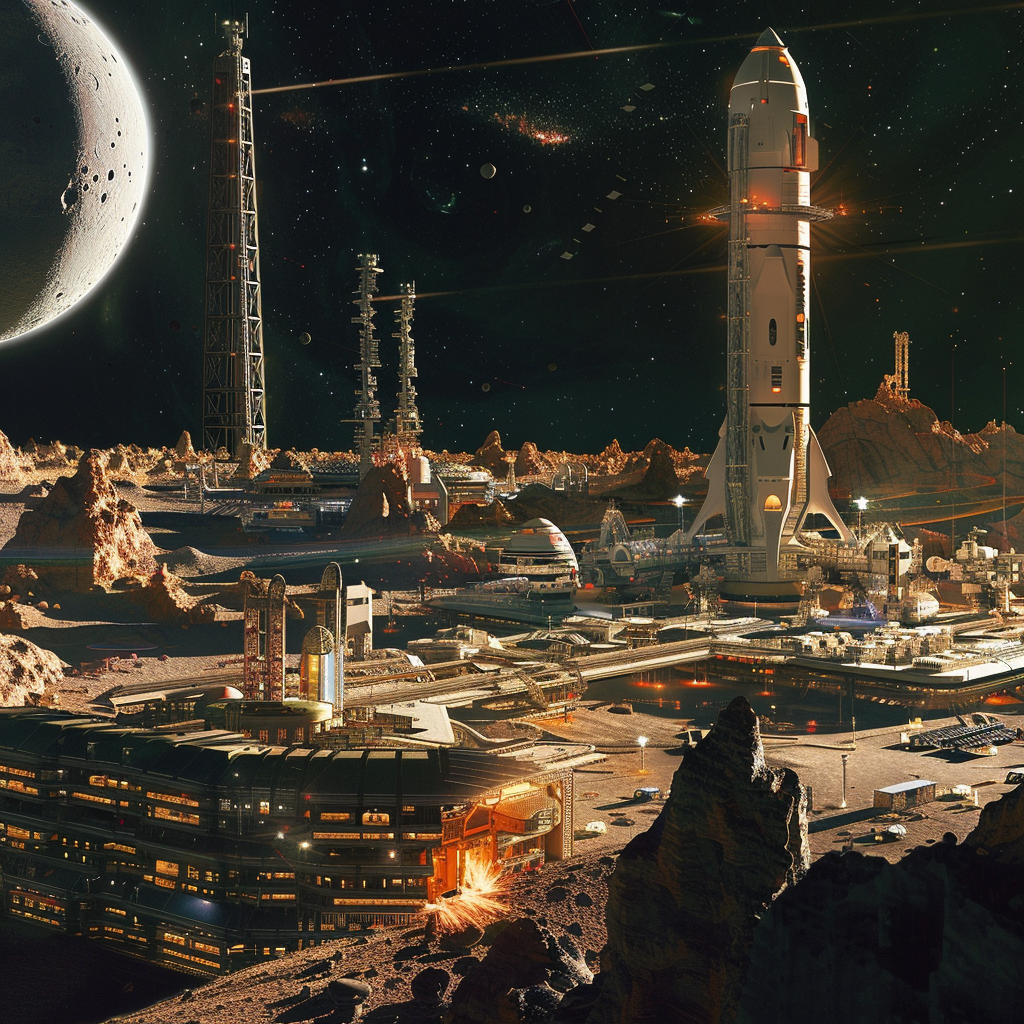
THE SPACE ECONOMY
A QUICK OVERVIEW
What is The Space Race?
The Space Race is a competition to achieve superior interspace travel capabilities. The technological advantage required to rapidly achieve spaceflight milestones is seen as necessary for national security, massive economic growth and civilization expansion. The Space Race generates a variety of technological advancements and is leading to significant scientific discovery.
The aspiration of becoming a multi-planetary species is critical for several reasons. First, it provides an alternate habitat for humanity in case of a global catastrophe on Earth. Second, the resources on other planets could potentially alleviate resource scarcity issues on our home planet. Lastly, the technological progress required for this endeavor would likely benefit life on Earth with its numerous applications.
To support human life in the harsh conditions of outer space, various types of habitats have been conceptualized and designed. These include space stations, lunar bases, and colonies on Mars. These habitats are equipped with features such as artificial gravity, radiation shielding, and systems for recycling air and water to create a livable environment.
The Space Economy
There are two types of economies being analyzed. Space for Earth, in which goods or services are produced in space for use on Earth. This includes telecommunications and internet infrastructure, satellites, pharmaceutical synthesis and more. According to McKinsey and Co. the Space for Earth economy grew to $447B in 2023 and could expand to $1 trillion by 2030.
The second type is the Space for Space economy, where goods and services produced in space are for use in space. This includes mining, refining, refueling depots and space habitats as well as all the service industries that would be associated with those core sectors. The astroid belt alone holds a tremendous amount of value with Davida, considered the most valuable, estimated to hold $27 quintillion US dollars worth of minerals.
Space Transit
The first piece of developing an interplanetary civilization is an interspace transit network. Successfully and affordably launching payloads from Earth to Orbit has been achieved and is becoming more economically viable in the private sector due to reusable rockets.
Transportation will continue to expand across industrial and commercial typologies to satisfy the varying needs of adapting to the space environment. New ships specific to cargo payloads of equipment, supplies and space station components as well as human transit and inner space exploration will begin to emerge in the coming years.
Industrial Supply Chain
In order to become a multiplanetary species we will have to create a complex new interplanetary supply chain and manufacturing system. While many of the various components required are currently being designed and manufactured here on Earth, they will eventually transition to Space to improve efficiency and reduce cost. Over time a new supply chain of resource extraction from other planets and asteroids will support a complex chain of fuel stations, energy plants, resource refineries and advanced industrial manufacturing stations. Thus alleviating the burden of shipping payloads to space.
Space Habitats
To support human life in the harsh conditions of outer space, various types of habitats have been conceptualized and designed. These include space stations, lunar bases, and colonies on Mars. We will see many theories tested in order to develop a space, lunar and martian construction standard. These will range from payloads that auto assemble after disconnect or drop to components assembled by robots and astronauts. A wide range of technological and scientific advancements will come to the surface involving the basic necessities of life including agriculture, gravitational support systems and environmental control systems. These will be heavily supported by the industrial supply chain that will be required to ensure economic viability of living habitats outside of scientific research and investment.
JOIN US TO KEEP UP ON THE LATEST INFORMATION INVOLVING THE SPACE ECONOMY
FREE TO JOIN, COSTLY TO IGNORE



